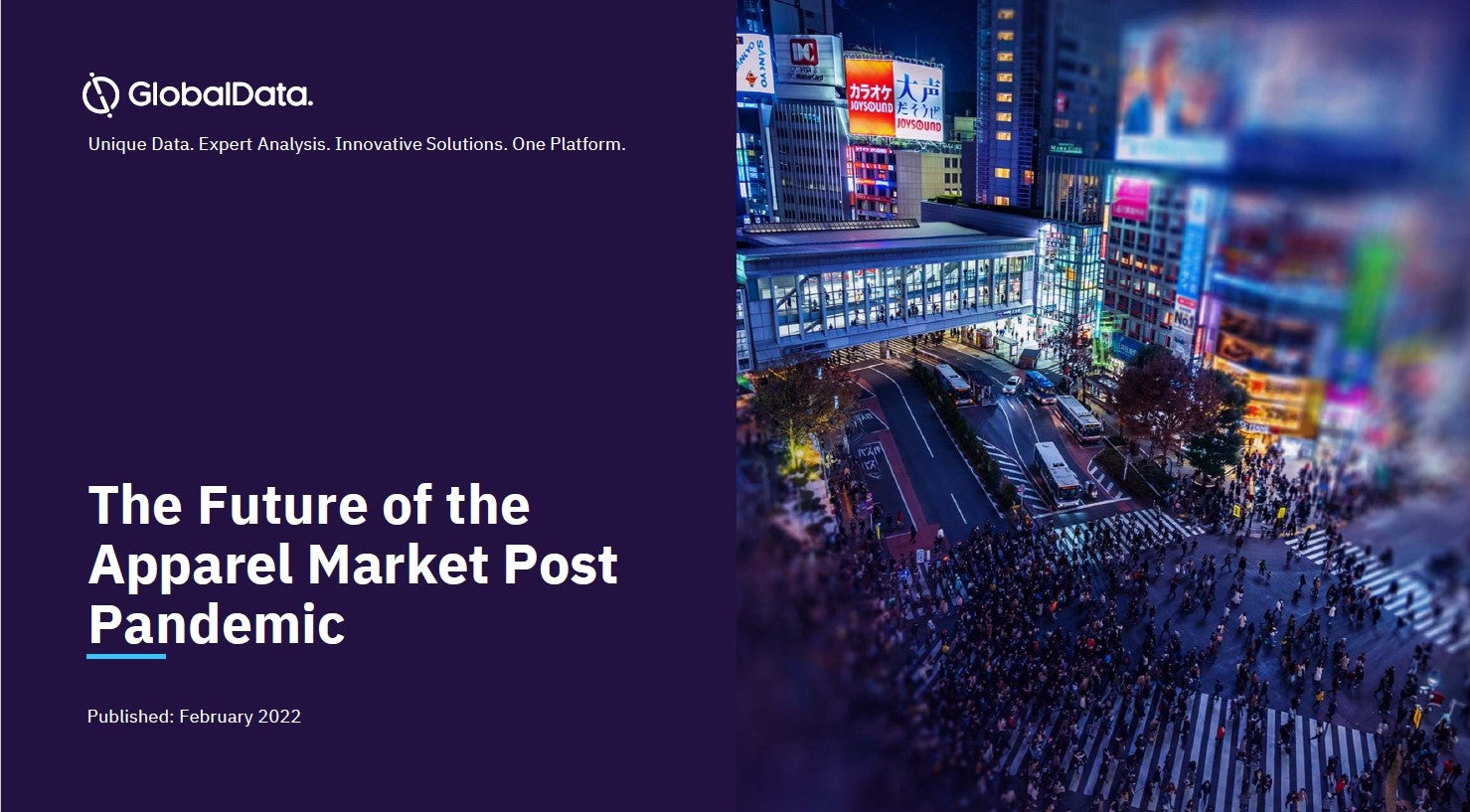
Now is the time to redesign the clothing supply chain – and trust, transparency and traceability must be the guiding forces, according to Accenture‘s Lynda Petherick.
It’s no surprise that the apparel sector is suffering the adverse impacts of Covid-19. Pressure is mounting on the sector supply chain, from abrupt order cancellations, halted payments for suppliers and workers, enforced factory and store closures, poor factory working conditions and below fair living wage. This is against a background of falling customer spending, a sharp decline in demand for clothing and footwear, and a climate crisis.
As most fashion retail stores have now re-opened, clothing manufacturers and their supply chain partners need to rebuild their supply chains to serve a radically different set of circumstances and address the issues that were brought to the fore during Covid-19. Not only that, but the problems that have been exacerbated by the pandemic mean the importance of sustainable practices is now more critical than ever. This ‘restart’ gives brands and retailers the opportunity to fundamentally reassess their ways of working, and crucially, work alongside manufacturers and suppliers to build sustainable mechanisms into their supply chains in order to transform the industry for good.
More than 150 billion garments are manufactured worldwide each year that pass through countless hands before reaching the consumer. From growers, processors and manufacturers, to distributors, warehouses and finally the stores themselves – these garments often end up far across the globe from where they were created. A garment’s complex journey means most retailers don’t have visibility beyond tier one or two in their supply chain, meaning the areas open to unsustainable and unfair practises are far greater. Covid-19 has also shown us that textile and inventory waste has become a key issue. It’s therefore time to improve the transparency and traceability of the production system and bring about positive changes for our planet, the people within it and the communities in which we work.
A huge part of this involves establishing what we call a responsible value chain, where your sustainability goals are typically focused on three key priorities.
How well do you really know your competitors?
Access the most comprehensive Company Profiles on the market, powered by GlobalData. Save hours of research. Gain competitive edge.

Thank you!
Your download email will arrive shortly
Not ready to buy yet? Download a free sample
We are confident about the unique quality of our Company Profiles. However, we want you to make the most beneficial decision for your business, so we offer a free sample that you can download by submitting the below form
By GlobalDataSee Also:
- The first is trust – whether that be from consumers, employees or investors – people need to know you are responding responsibly and effectively to the crises arising from unsustainable practises in retail.
- The second is a focus on Net Zero ambitions through achieving carbon-neutral clothes and operations across the whole supply chain.
- Finally, we have the need for circularity of products and services. That is to say, enhancing resource efficiency or extending the lifecycle and use of a garment. The need for resource-efficient business models, at a time where resources are indeed finite, has never been greater.
This is a great challenge in a manufacturing world with incredibly complicated systems: how do we bring about greater transparency and traceability and use it to drive sustainable and ethical practices, all whilst embedding circular practices across the industry supply chain? The potential benefits are huge, and given the scale of the process, there is a diverse range of opportunities.
Research conducted by The Dock, Accenture’s flagship R&D and innovation centre, finds an emerging picture of a sector ready for disruption and willing to change. We identified six key considerations for restarting the fashion supply chain and addressing sustainability in a post-pandemic world:
#1: Make sustainability systemic by integrating it into the heart of business strategy. Brands and suppliers must align their existing purpose with sustainability goals and consider it against measures of business growth, making sustainability an equivalent factor to cost, lead time and quality. As we embark on what many believe to be the ‘decade to deliver’ on the UN sustainability goals, it is crucial that retailers are considering society and the planet as additional stakeholders to truly have an impact.
#2: Use technologies such as advanced AI to better predict demand and reduce excess stock. Sustainability only works if brands and suppliers understand how to reduce their negative impact on the ecosystem, whilst maintaining and growing their business in the long term. Not only that, these technologies are important enablers for transitioning to a circular retail economy by reducing wastage and keeping products, equipment and infrastructure in use for longer.
#3: Develop partnerships and build strategic industry-wide relationships. This will put organisations on the leading edge of the industry while committing to greater transparency and encouraging open communication. For example, by incentivising better relationships through community initiatives around education, grants and fair trade or by improving payment terms and access to financial and other services as a response to full transparency. Technology is a key ingredient here. While it alone will not solve the problem, it will enable collaboration by making data available, facilitating communication and idea sharing, automating processes and providing planning visibility.
#4: Global industry standards are needed for sustainability guidelines and working practices. The creation of a garment is a global event, crossing countries and language barriers. If codes of conduct, process steps, and guidelines were standardised, every player in the ecosystem would understand the rules of engagement, no matter where they are in the global supply chain. But it’s difficult for retailers to keep up with intricate and changing sustainability or ESG requirements demanded by regulators, consumers and NGOs. They tend to develop their own policies and standards, which only add to the complexity and variability. It’s a complex challenge but working together with industry bodies towards common standards will drive the right kind of change. Thankfully the industry already operates in an environment of high interdependence but there is a greater need for technology platform solutions to facilitate information sharing.
#5: Standardise audit requirements and frequency. Brands should collaborate to radically improve the efficiency and visibility of one of the most challenging parts of the apparel supply chain. For brands, this means working to standardise audit requirements to reduce duplicate audits and excessive supplier expense, and to share the audit burden. In turn, suppliers must review their policies around external visibility of their audit results. Initiatives such as the SLCP (the Social and Labour Convergence Program), Higg Index, Better Work, Sedex and Fair Factories Clearinghouse have enabled great progress here already.
#6: Legacy systems need a radical restyle. Brands and suppliers are collecting and processing formidable amounts of data. There’s a real opportunity to manage this data more effectively and leverage its insights to make better decisions, enable circularity and reduce wastage.
People have often thought that a blocker of transparency in the supply chain was that the system was unchangeable because the system was unstoppable. Since the pandemic arrived, consumption in this industry paused somewhat and, as a result, the frenetic pace of production is being put under the microscope, with people and businesses reassessing what they really need and what is really right. Sustainability and transparency must be front and centre as retail businesses press play again.
There is no one solution to such a complex problem, made even more challenging due to the current environment. Creating meaningful change will require a huge amount of collaboration across strategy, transparency, trust and guidance. Technology will not solve all these issues, but it can be used to improve conditions, trust and transparency in nearly all of them, all while helping retailers shift to a circular business model.
Doing nothing is not an option. When it comes to sustainability and the supply chain, brands no longer have the luxury of choice around whether to share their consumers’ values. The risk is higher when it comes to fashion: this is an industry where the consumer expects to see their own shifting values and tastes reflected almost immediately on the rack. In a post-Covid world, customers are likely to be even more discerning, so the need for a responsible value chain has never been more urgent.










Related Company Profiles
Accenture Plc
Better Work